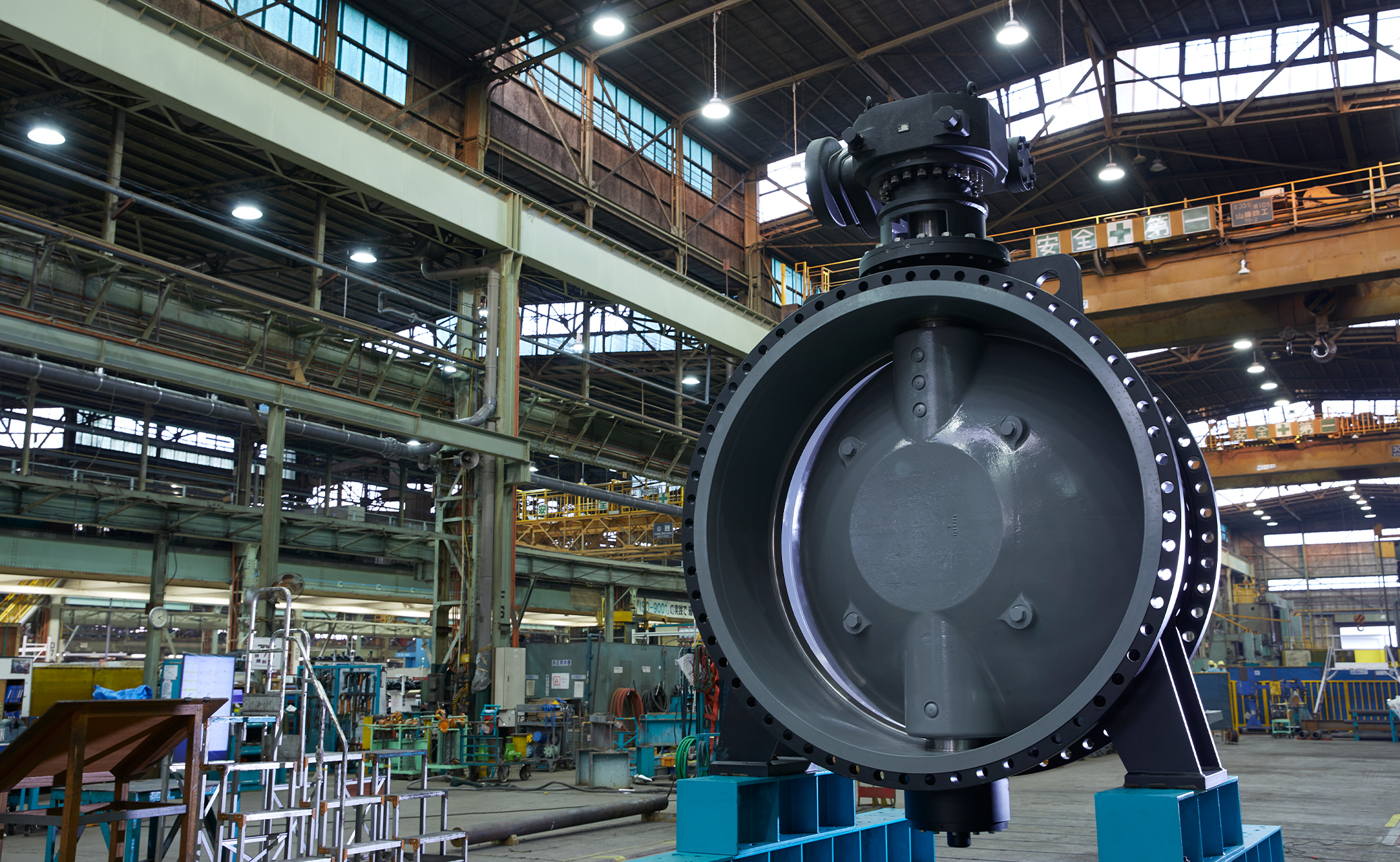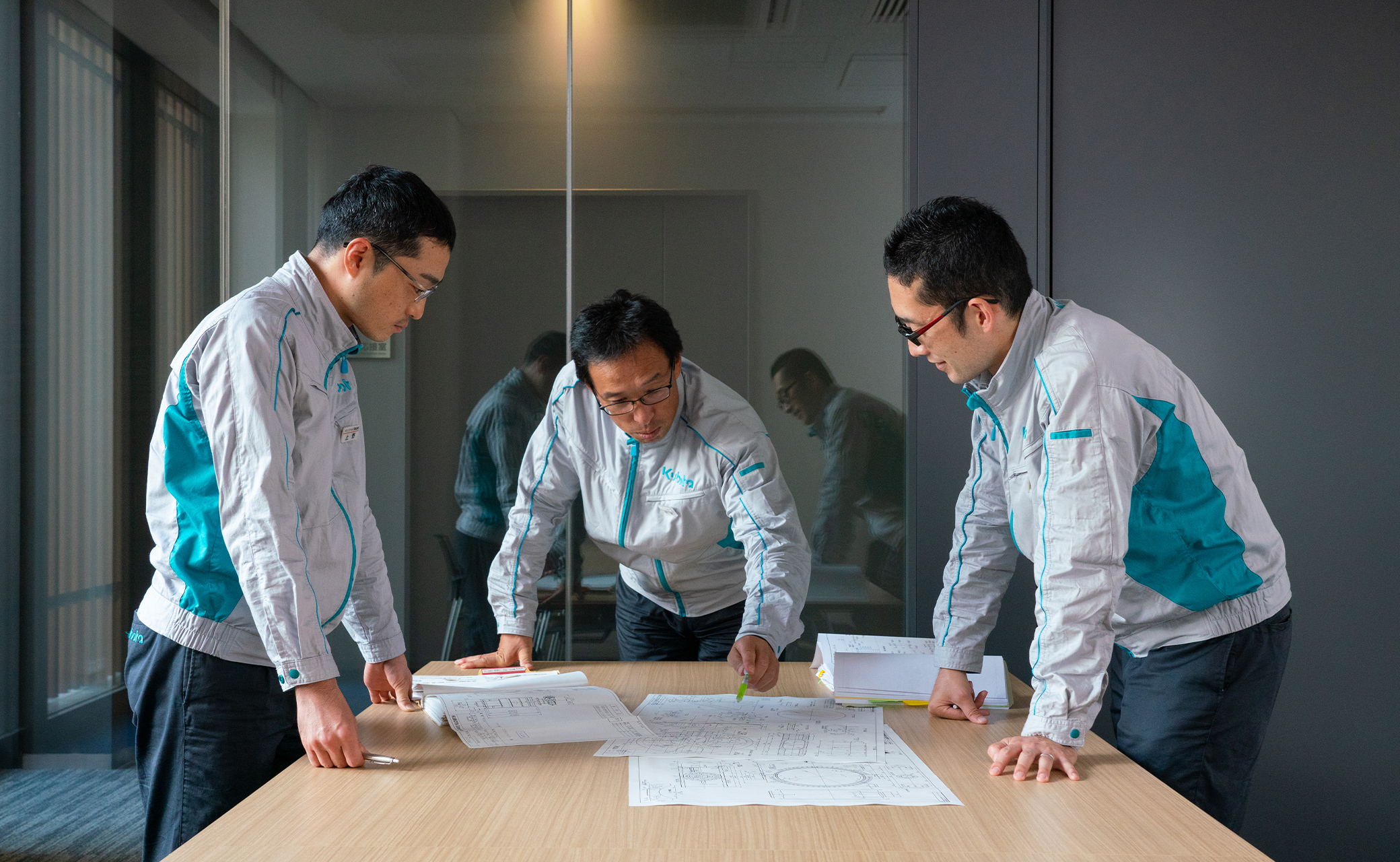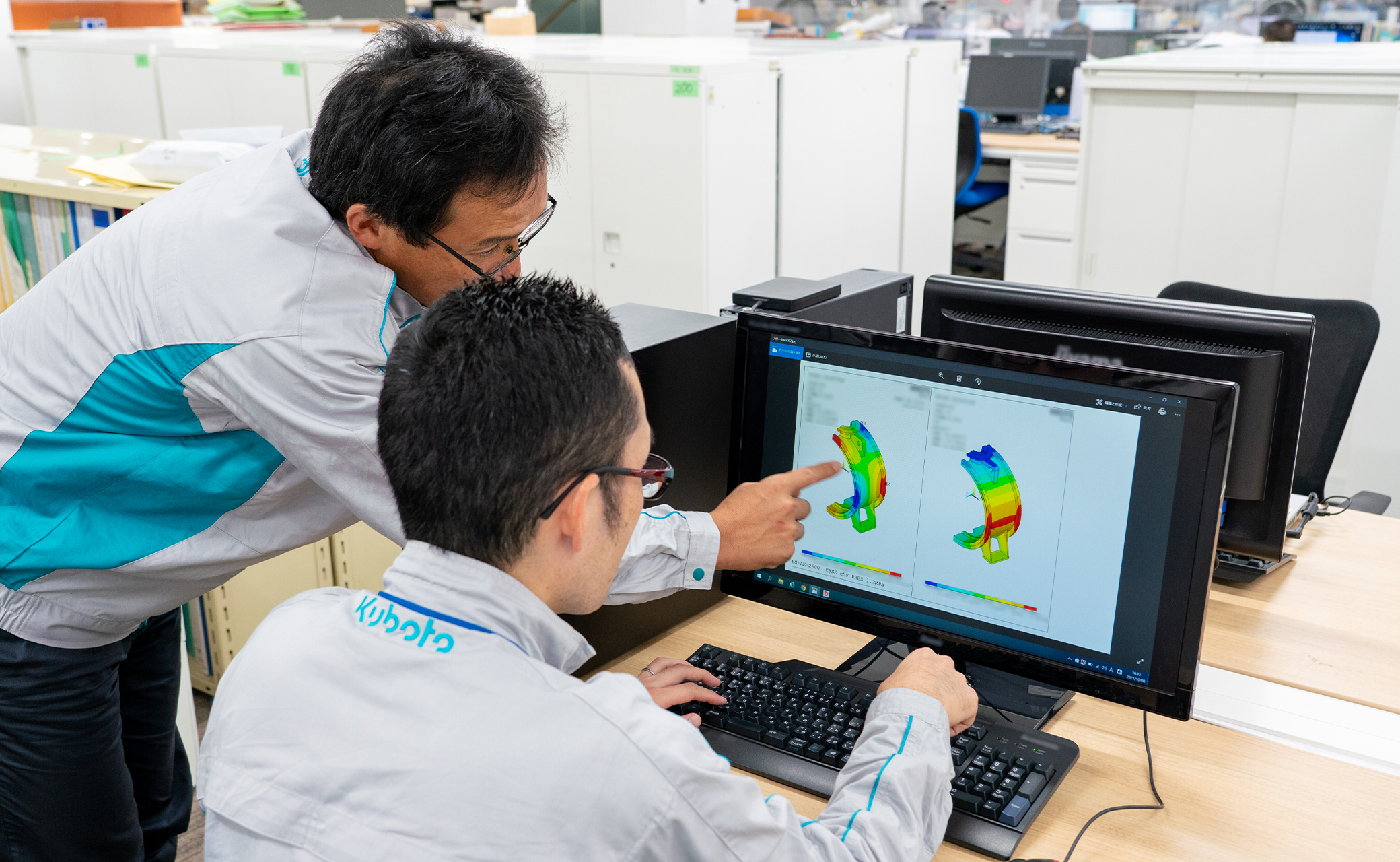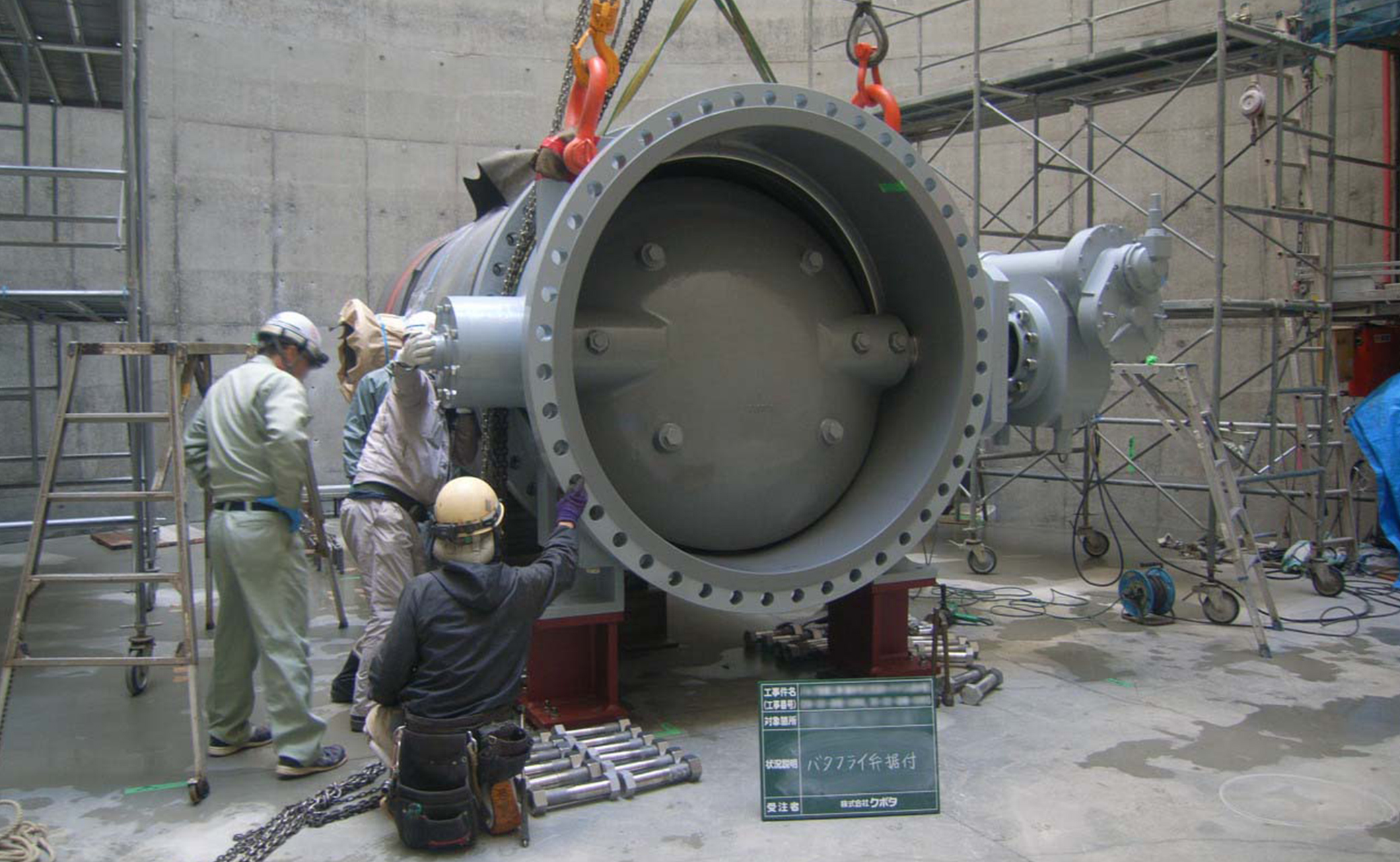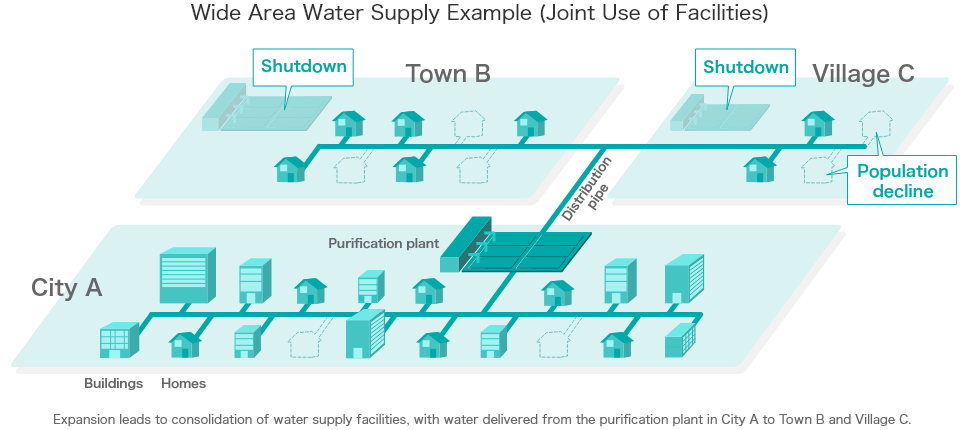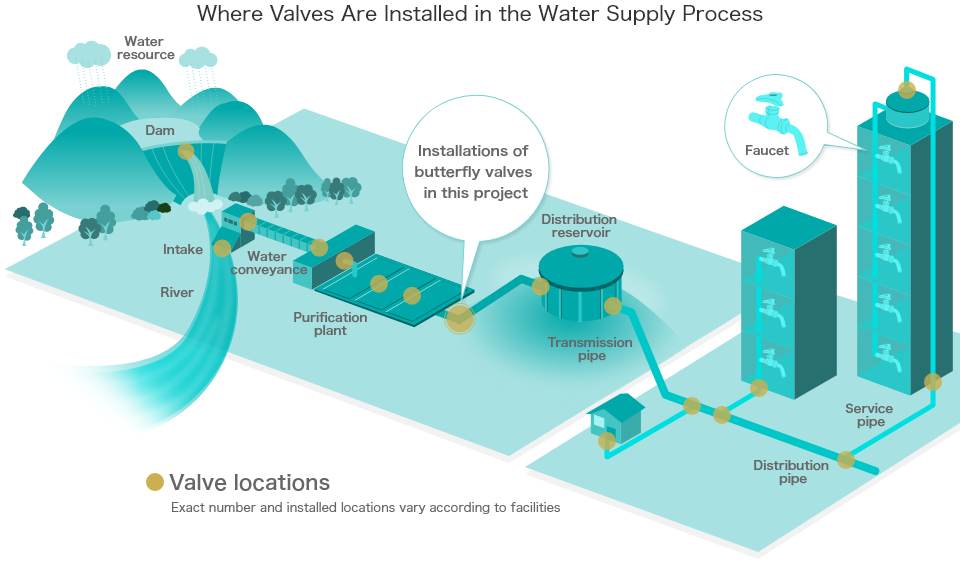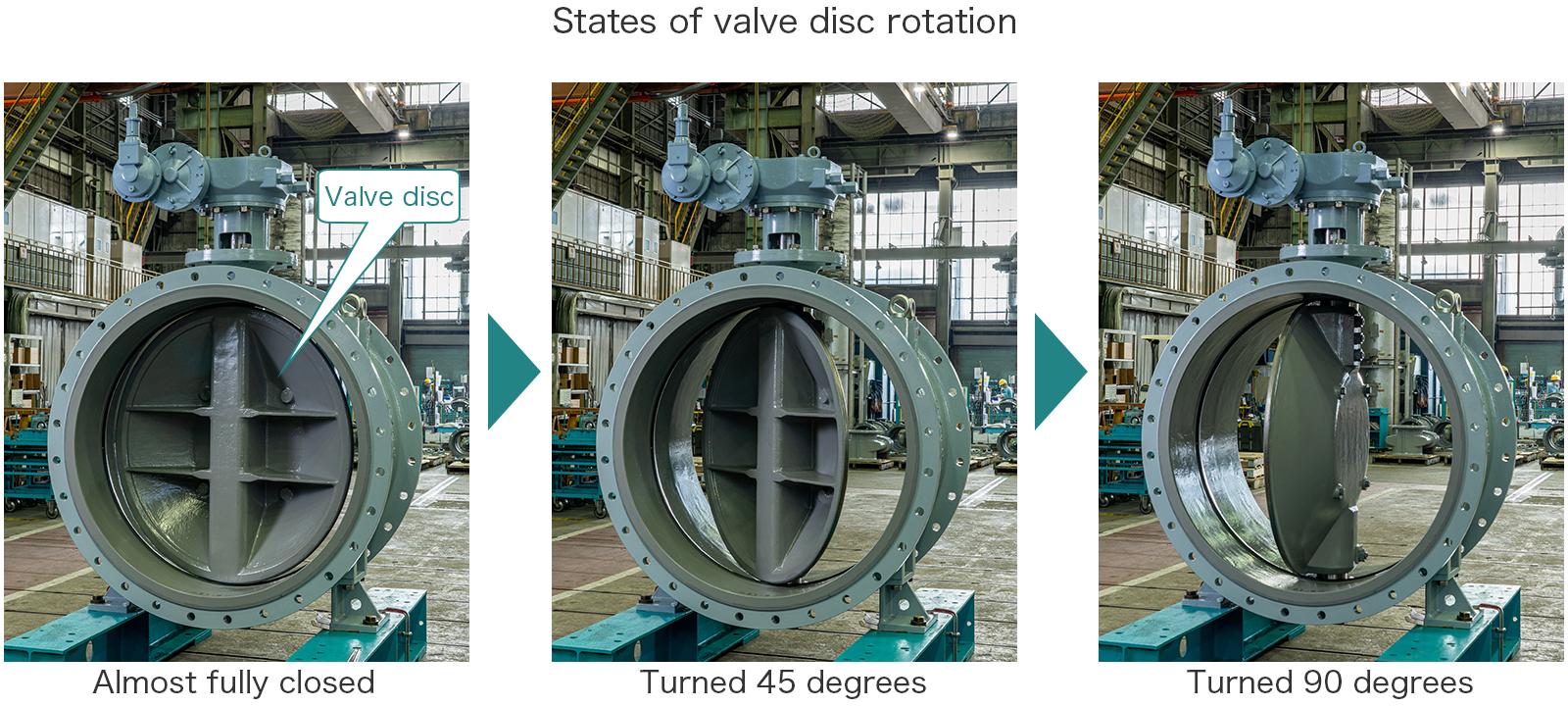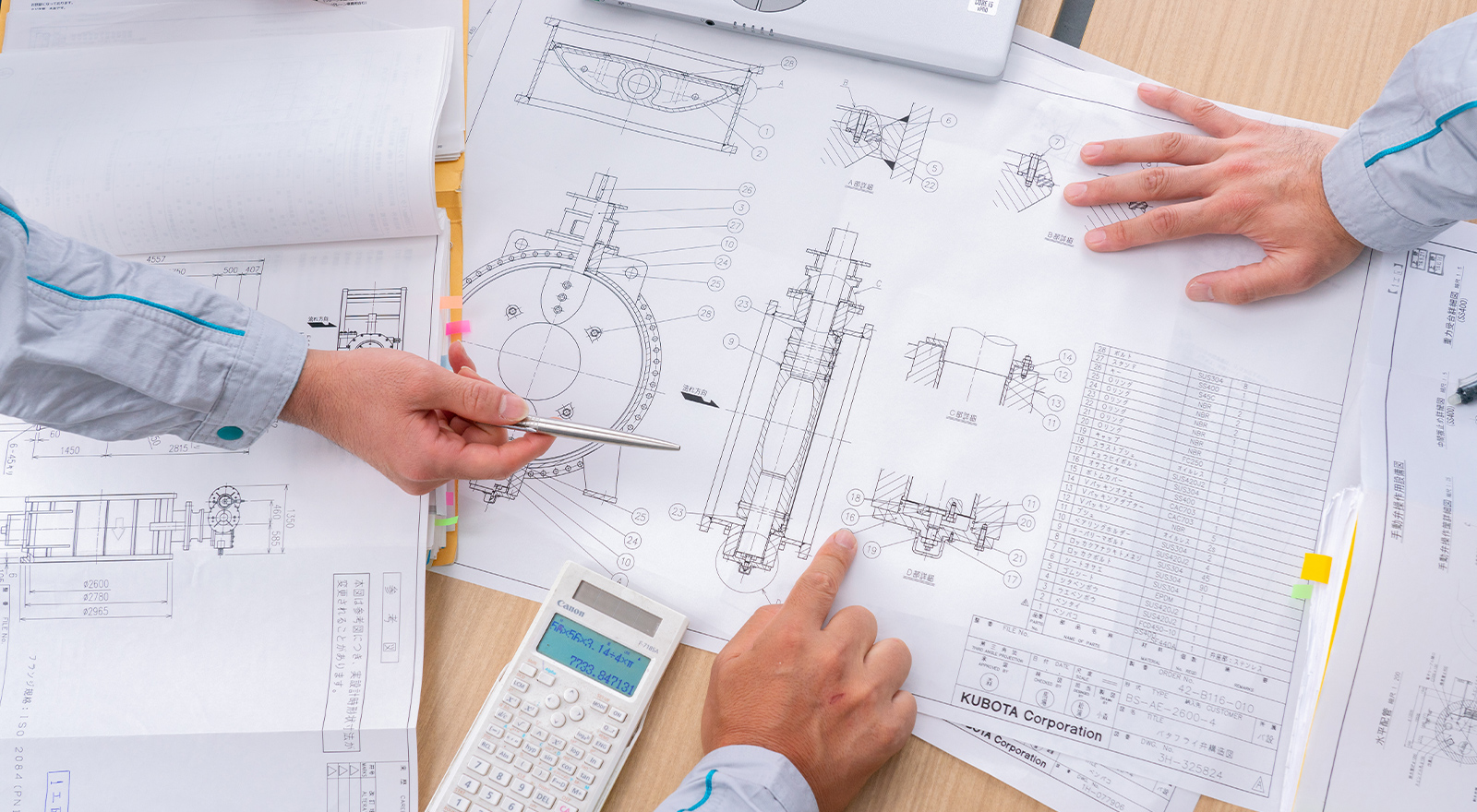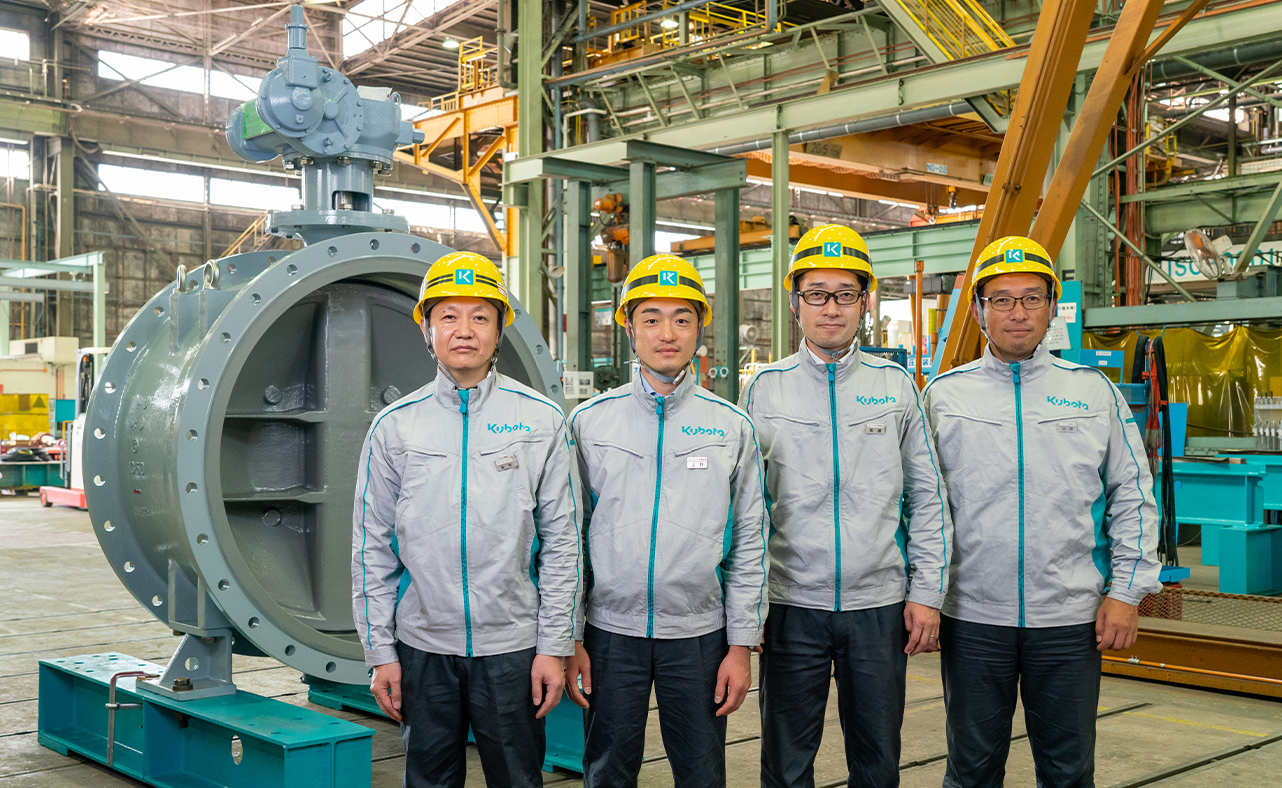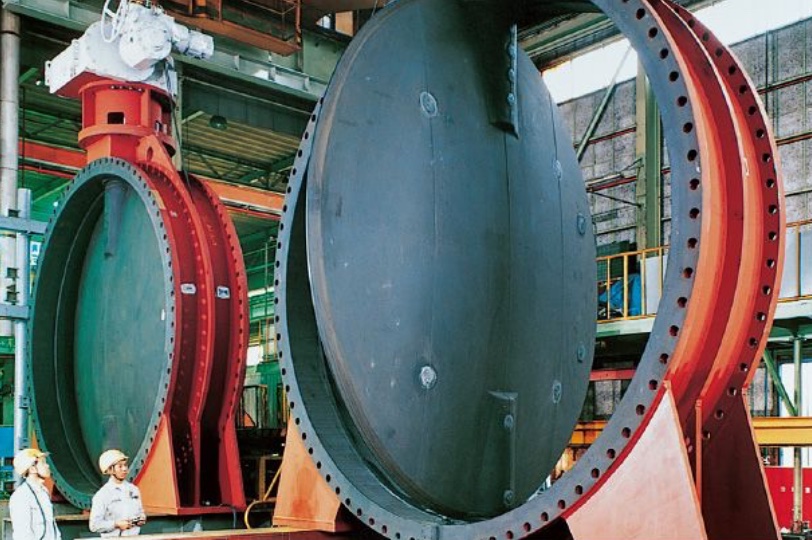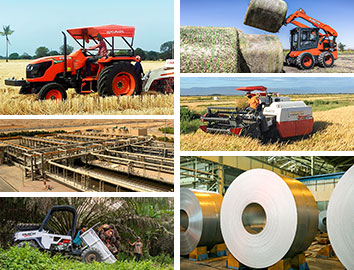Valves Supporting Water Infrastructure and Protecting Lives
Valves
Valves are used to control the flow of water and other fluids. In addition to their vital part in the infrastructure that delivers water to our homes, valves also play important roles in shutting off water to prevent leakage from damaged pipes in the event of a disaster. From the time of its founding, Kubota has continuously supplied the valves that meet a wide range of users’ needs all over the world. For this project, Kubota succeeded in manufacturing butterfly valves with a diameter of 2,600 mm and the capability to shut off water pressure of 1.3 MPa. Kubota is creating new possibilities for valves as the heart of control systems with the experience and technology it has cultivated over many years.
The Need to Cope with High Pressure when Delivering Water from Deep Underground to Distant Places
Much of Japan’s water supply infrastructure built during the high economic growth period has reached the end of its lifetime of 40 to 60 years, making the renewal of water supply facilities an urgent issue. Unfortunately, water authorities responsible for these upgrades face financial challenges such as a decrease in revenues due to declining populations using water and shortages of personnel, so upgrades are taking longer than expected.
To cut costs and cope with personnel shortages, some local governments in Japan have begun to consolidate water utilities in multiple districts and supply water across borders of cities, towns, and villages.
What is more, increasingly urbanized areas are making greater use of underground spaces for subways, gas pipes, fiber-optic internet cables, and rainwater pipes that prevent flooding during heavy rains. In some cases, when new water pipelines are required, they must be buried more than 40 meters underground.
Given these kinds of challenges faced by water utilities, it is becoming increasingly necessary to pump water using high pressure from deep underground so it can be delivered to faraway locations. This means that water pipes and valves must meet specifications that can withstand high levels of water pressure.
Kubota’s Wide-Range Valve Manufacturing Experience Makes It Attuned to Customer Needs
Before water reaches the user, it goes through a long process. The water comes from its source through a dam and is drawn from a river. The water passes through a purification plant, into transmission pipes, distribution pipes, and service pipes. Valves are placed throughout this process to stop the flow and regulate the pressure of the water so that people can use the water supply without any issues.
Modern water systems primarily use gate valves, which have a valve disc (the part that moves to stop or regulate the flow of liquid) that moves up and down to stop the flow of water. Today gate valves are mostly used for small-diameter waterworks, but for medium-diameter and larger pipes, the butterfly valve, in which the center valve disc rotates 90 degrees to stop or regulate the flow of water, is the mainstream.
In this case, Kubota designed and manufactured a butterfly valve for a public works project. This valve can be used for pipes with large diameters of 2,600 mm and can withstand high levels of water pressure at 1.3 MPa*. The butterfly valve is more compact and lighter in weight than gate valves, making it easier to transport and install. However, this butterfly valve manufactured by Kubota required specifications that made it different from conventional products.
- 1MPa is the water pressure of a column of water rising about 100 meters. A five-story building requires water pressure of 0.30 to 0.35 MPa. In the waterworks field, strength and water tightness for 0.75 MPa are usually required.
Butterfly valves used in public works projects are generally sizes of 1,500 mm or less in diameter. These are made of cast iron (a technique in which molten iron is poured into molds), which allows for mass production. On the other hand, large-diameter butterfly valves for private enterprises such as power plants and steel mills are often one-of-a-kind valves made from steel sheets (in a technique in which the sheet is cut, bent, and welded). The butterfly valves to be manufactured for Kubota’s project have a large diameter of 2,600 mm and must be kept light in weight. Therefore, they are made from steel sheets, which are lighter than cast iron, even though these valves are being used for public works.
In addition, valves used in waterworks are subject to standards set by the Japan Water Works Association (JWWA) that specify dimensions, materials, pressure, and other factors. The butterfly valve for this project had a diameter of 2,600 mm and water pressure of 1.3 MPa, which made it non-standard. In other words, Kubota had to take on the manufacturing of a valve that had never been made before.
The Power of Multiplication Creates a Completely New Butterfly Valve
Kubota has been making valves since 1897. The company has developed and manufactured a wide variety of valves ranging in uses from public works to private companies and customized for industries such as electric power, steel, petrochemicals, and gas. This has resulted in an excellent track record delivering for public utilities and a strong reputation for dependability, as well as a wealth of expertise in manufacturing one-of-a-kind products with unique specifications for the private sector.
In the preliminary design process that determines if manufacturing is possible before an order is received, first criteria such as the dimensions and strength of the valve body (the body that is connected to the pipe) and valve disc must be determined. Here, the work was founded on the track record of valves that had been manufactured in the past. To set the criteria, Kubota employees with extensive experience across multiple departments discussed the strength, thickness, rigidity, and other elements of the parts that join with the water pipes based on the company’s track record with valves that have diameters of nearly 2,600 mm.
-
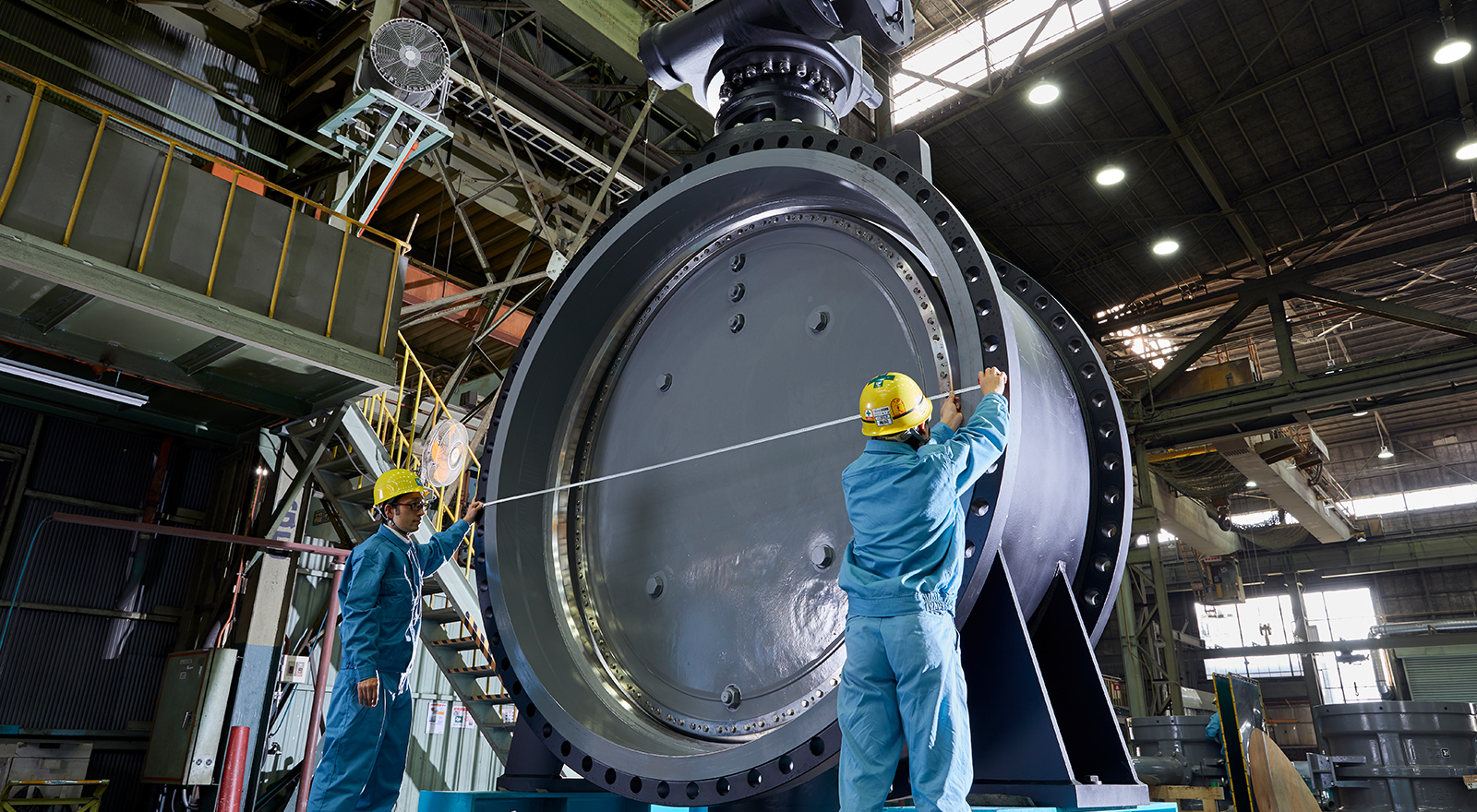
A butterfly valve with a 2,600 mm diameter that can withstand 1.3 MPa of pressure
For the design details, based on the drawings carried on from previous designs, the engineers finalized the welding size and shape for the steel plates and selected materials to be used for the valve stem (the shaft that rotates the valve disc 90 degrees) and other parts, which were chosen to withstand high levels of water pressure. Along with the design department, the assembly, machining, welding, and other departments joined forces and worked closely together to create the detailed drawings.
The butterfly valve attempted for this project had specifications for a diameter of 2,600mm and water pressure of 1.3MPa. It also had to allow fluids to flow smoothly.
Just making the valve larger to fit the large-diameter specifications would increase the weight, which would make the product difficult to install and transport. It would also increase production costs, making it more expensive. That is why analysis and strength calculations were very important so that the valve could be as compact as possible while meeting the specifications. The foundation for achieving this was the valve manufacturing experience that the engineers’ predecessors had accumulated. Simulations based on past achievements helped them arrive at a shape that would allow water to flow both easily and at high strength.
-
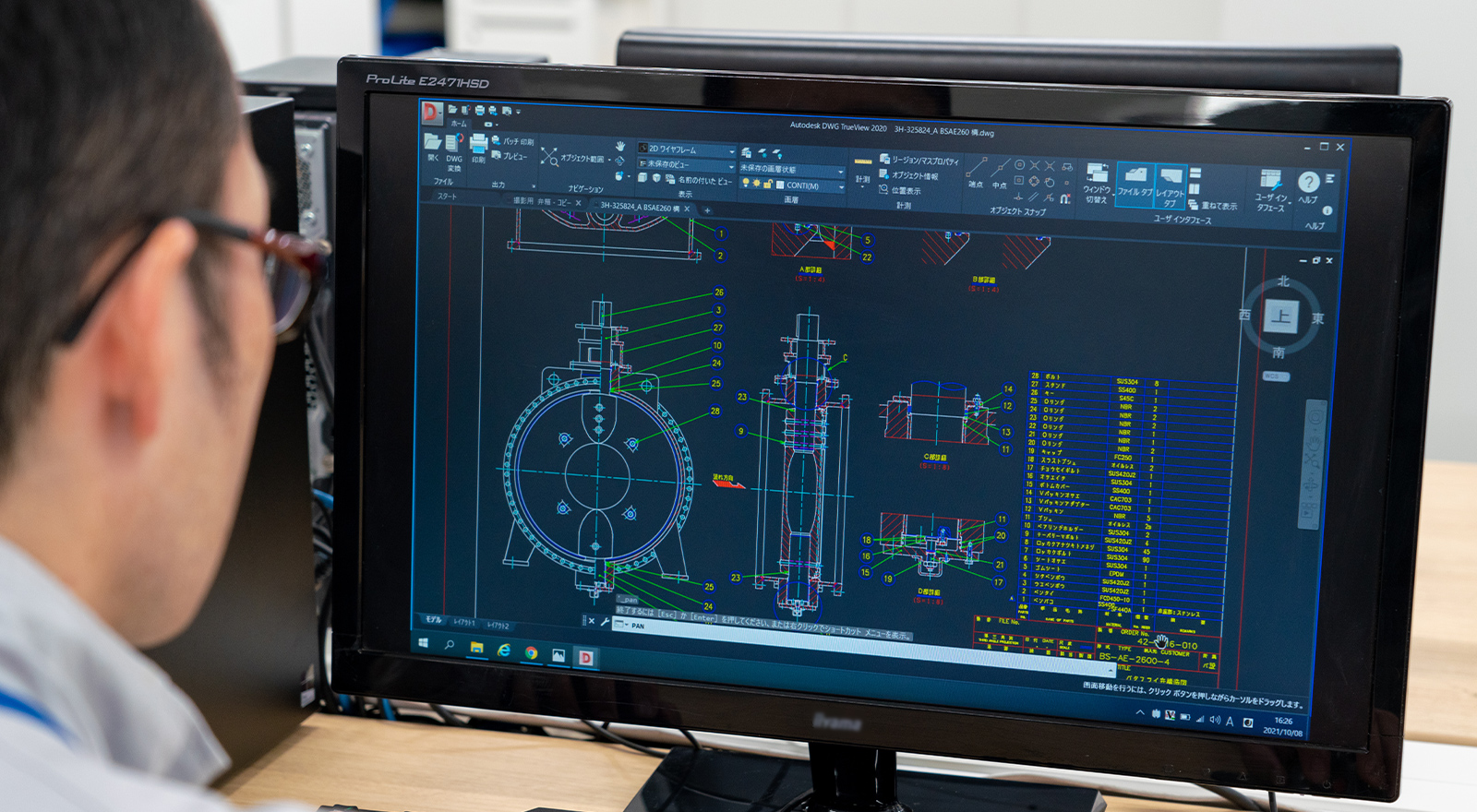
Discussions on valve shape in design details
-
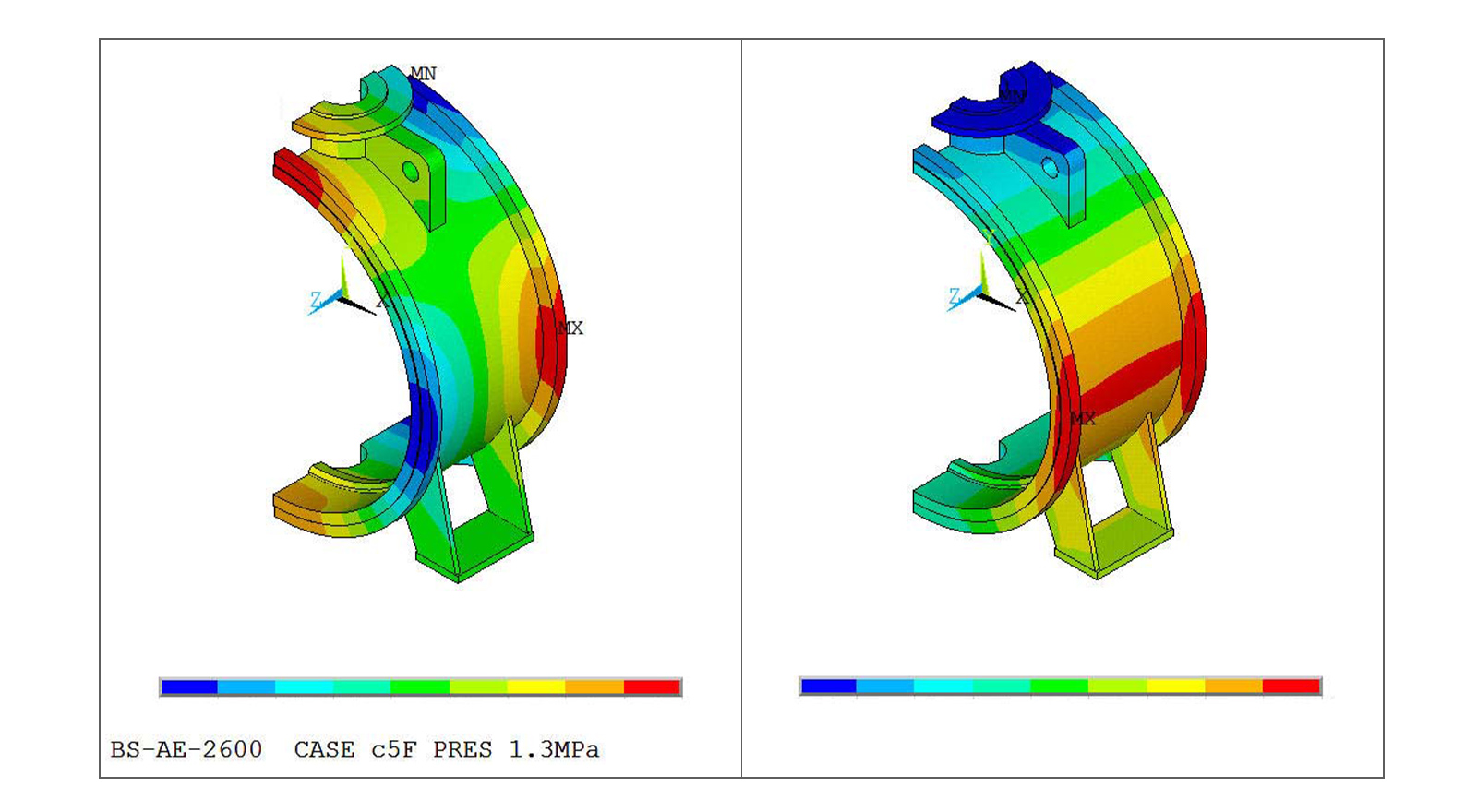
Valve body analysis
Because not even the slightest amount of leakage can be permitted with butterfly valves, the workers make fine adjustments that take into account deformation caused by water pressure. These are based on know-how accumulated over many years of valve maintenance for private companies, including wear on parts, rust, dirt, and other factors from usage environments that affect valve condition, feedback from past products, and the resulting adjustment expertise. For this butterfly valve, the team applied their expertise and made necessary adjustments to the rubber seat tightness to prevent leakage, assembling the product while ensuring quality.
-
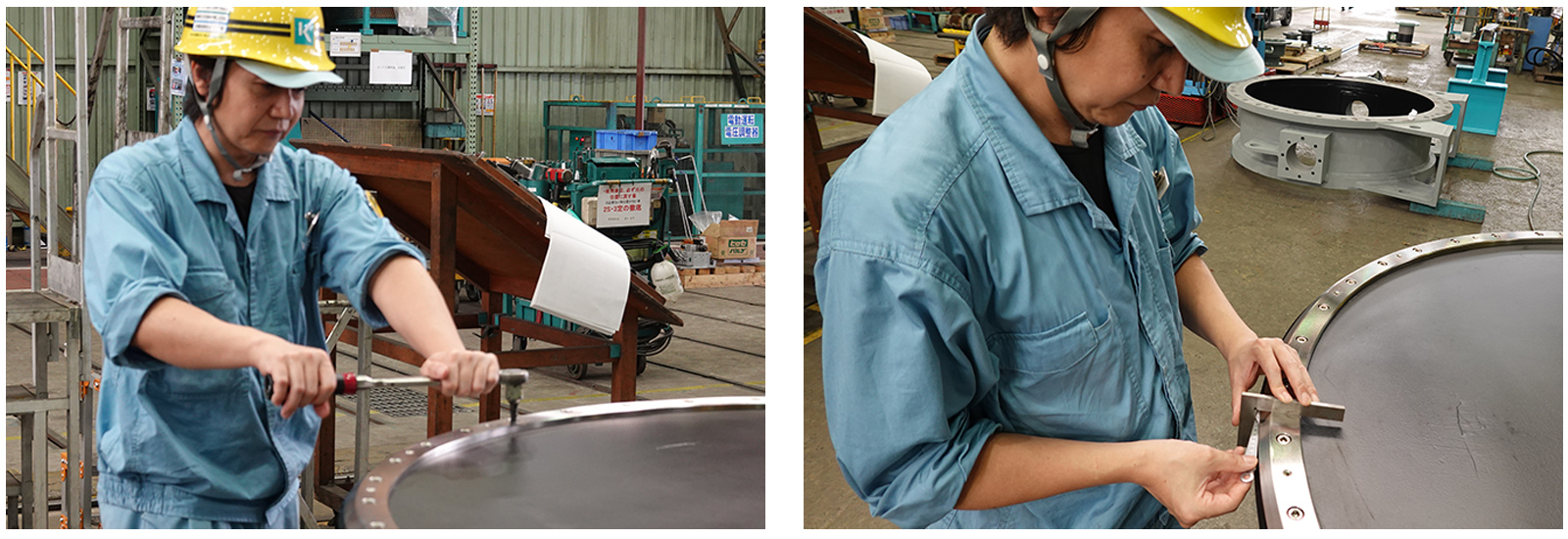
Adjusting the rubber seat is the key to preventing valve leakage.
After assembly, the valves passed tests for leakage under conditions even more stringent than the places in which they are actually used. A combination of past results, expertise, and technological capabilities built up over the years was applied to each process. The result was a butterfly valve unlike any other before, with a 2,600 mm diameter and capability to withstand 1.3 MPa of water pressure.
IoT Takes Valves to a New Stage
In terms of water, the next stage for valves is expected to be the role of flow sensing.
For example, built-in communication systems could enable valves to send out information about the pressure inside water pipes, water impurities, chlorine concentration, odors, and other factors so that water utilities can monitor conditions within the pipes at any time. This would also allow information to reach the water utilities more quickly in the event of an emergency, leading to faster recovery efforts.
Functional enhancements to valves are steadily progressing, as can be seen in the use of predictive maintenance using AI analysis to prevent failures in some valves currently being supplied to private companies. Kubota will continue to transcend boundaries of markets and fields to pursue valves that support infrastructure and industry.
